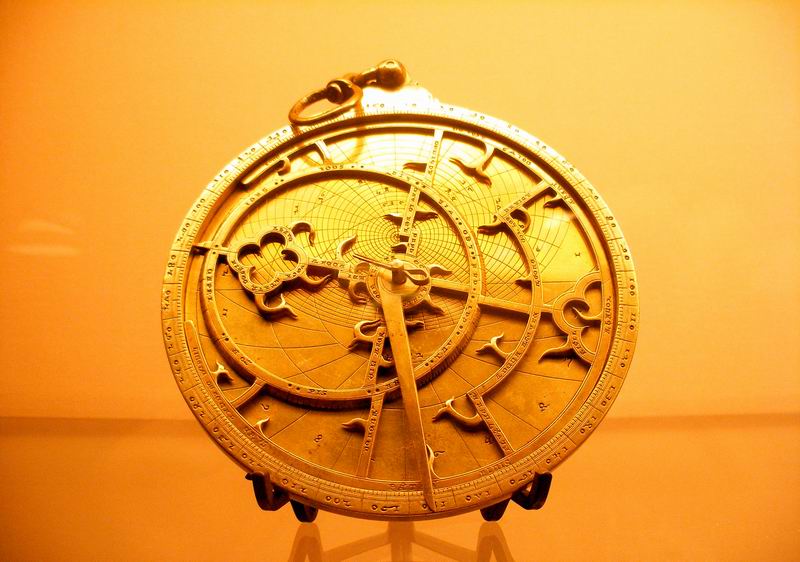
Image by Anders Sandberg, via Wikimedia Commons
Asked to imagine the character of everyday life in the Middle Ages, a young student in the twenty-twenties might well reply, before getting around to any other details, that it involved no smartphones. But even the flashiest new technologies have long evolutionary histories, and, in certain notable respects, even the smartphone has a medieval ancestor. That would be the astrolabe, an especially fascinating eleventh-century example of which was recently discovered at the Fondazione Museo Miniscalchi-Erizzo in Verona. It was identified by University of Cambridge historian Federica Gigante, who’s been making the media rounds to explain the context and function of this striking and historic device.
“It’s basically the world’s earliest smartphone,” Gigante says in an NPR All Things Considered segment. “With one simple calculation, you can tell the time, but you can also do all sorts of other things.” In a visual New York Times feature, Franz Lidz and Clara Vannucci add that astrolabes, which resembled “large, old-fashioned vest pocket watches,” also allowed their users to determine “distances, heights, latitudes and even (with a horoscope) the future.”
Gigante tells them that, when she got the chance to pay the Miniscalchi-Erizzo astrolabe closer scrutiny, she could identify Arabic inscriptions, “faint Hebrew markings,” and Western numerals, which made this particular artifact “a powerful record of scientific exchange between Muslims, Jews and Christians over nearly a millennium.”
In the video above, Seb Falk, author of The Light Ages: The Surprising Story of Medieval Science, demonstrates how to use an astrolabe to calculate the time. It is, admittedly, a more complicated affair than glancing at the screen of your phone, analogies to which have become irresistible in these discussions. “Like the smartphone, the astrolabe came into being during times of economic prosperity — in that case, likely during the height of the Roman Empire,” writes Smithsonian ‘s Laura Poppick. Though functional astrolabes were made of ordinary wood or metals, the surviving examples tend to be ornately engraved brass, which provided status value to the high-end market. In that respect, too, the astrolabe resembles the “conceptual ancestor to the iPhone 7” — a device that, in the eyes of technophiles here in 2024, now looks fairly medieval itself.
Related content:
The Ancient Astronomy of Stonehenge Decoded
The World’s First Mobile Phone Shown in 1922 Vintage Film
Based in Seoul, Colin Marshall writes and broadcasts on cities, language, and culture. His projects include the Substack newsletter Books on Cities, the book The Stateless City: a Walk through 21st-Century Los Angeles and the video series The City in Cinema. Follow him on Twitter at @colinmarshall or on Facebook.


This introduction to the astrolabe is fascinating! I love how you’ve drawn parallels between medieval technology and modern smartphones. It’s incredible to see how innovation has evolved over time. Great work!